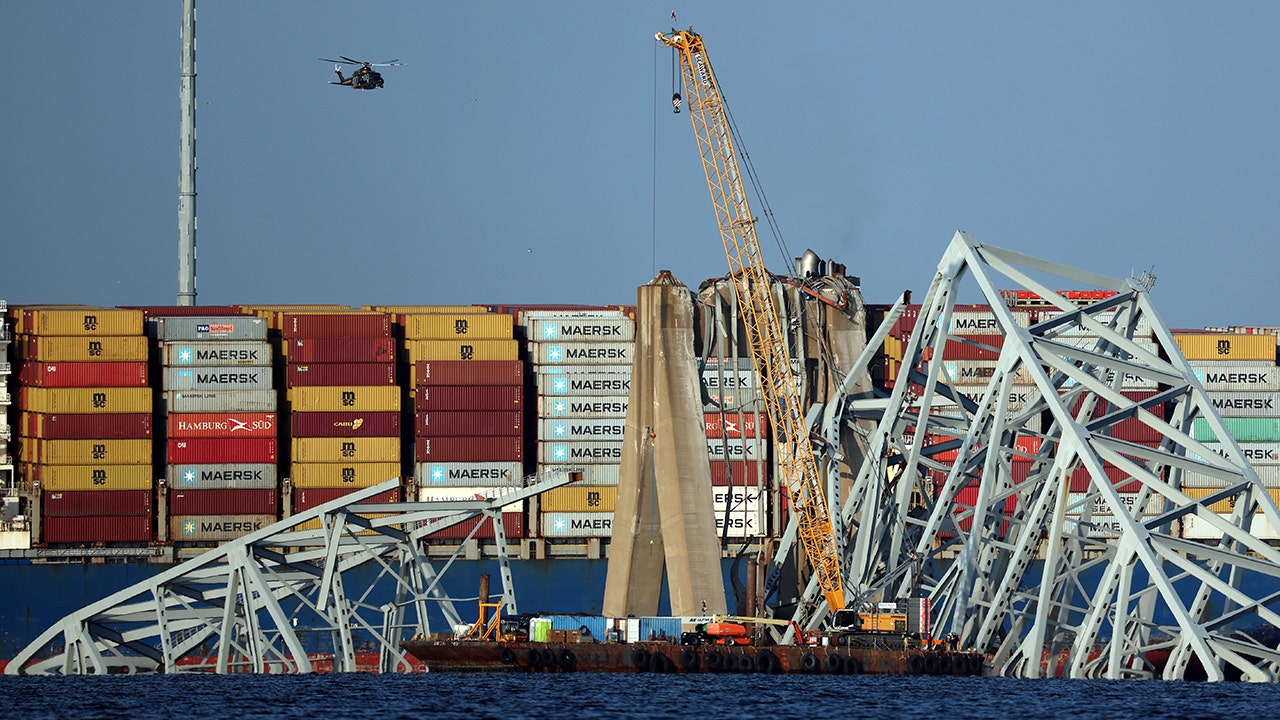
The impact of the Francis Scott Key Bridge disaster in Baltimore is “hard to comprehend” when it comes to the local economy and governments, according to tax revenue expert and CEO Niko Spyridonos.
The stunning collapse of the Francis Scott Key Bridge in Baltimore last week could pose a temporary economic threat to local and state economies, according to Moody’s.
In a new analyst note, Moody’s said that both Baltimore and Maryland face potential fallout as wreckage from the bridge blocks a vital shipping lane to one of the country’s busiest ports.
“The collapse of the Francis Scott Key Bridge on March 26 will temporarily disrupt the transportation, logistics and warehousing economy of the City of Baltimore (Aa2 stable) and the State of Maryland (Aaa stable),” the report said. “However, a successful resumption of port activity in coming weeks, combined with substantial federal funding for an eventual bridge replacement, will reduce risk of long-term damage.”
The Port of Baltimore was the 17th largest in the country in terms of total cargo tonnage in 2021 and a top mover of cars and light trucks. In 2023, the port handled a record 52.3 million tons of international cargo – worth nearly $81 billion, according to Maryland data.
ECONOMIC IMPACT FROM BALTIMORE BRIDGE COLLAPSE WILL BE LONG-LASTING, TRADE GROUP WARNS

A crane works on clearing debris from the Francis Scott Key Bridge on March 29, 2024 in Baltimore, Maryland. (Photo by Kevin Dietsch/Getty Images / Getty Images)
The port is one of just four in the country that is equipped to handle larger cargo boats, according to Moody’s.
“Replacing the 47-year-old bridge, which carried US Interstate 695, will likely require years of work, but the Port of Baltimore may resume operations in coming weeks, if debris is rapidly removed,” Moody’s said. “As long as the port is closed, diversion of automotive imports and other cargo to other East Coast ports will erode Baltimore’s advantage as the port closest to the Midwest, to the detriment of terminal operators including Ports America Chesapeake, LLC.”
FRANCIS SCOTT KEY BRIDGE COLLAPSE: FAST FACTS ABOUT THE PORT OF BALTIMORE
Officials said Monday that the U.S. Coast Guard is preparing to open a temporary alternate channel for commercial essential vessels, part of a phased approach to opening the main channel. Crews are also working to remove the steel and concrete at the site of the deadly collapse, which occurred after a freighter struck the bridge.

The Francis Scott Key Bridge, a major span over the Patapsco River in Baltimore, collapsed after it was struck by a large cargo ship on March 26, 2024, prompting a massive emergency response for multiple people in the water. (Jasper Colt-USA Today / IMAGN)
“This will mark an important first step along the road to reopening the port of Baltimore,” Capt. David O’Connell, a commander for the Coast Guard’s Maryland-National Capital region, said in the announcement. “By opening this alternate route, we will support the flow of marine traffic into Baltimore.”
The port – which is closed indefinitely pending investigation and the removal of debris from the wreckage – is also a major employer in the area. Moody’s estimates that it has created roughly 19,970 direct jobs, or about 1.4% of total employment in the Baltimore area and 0.7% of total employment in the state.
GET FOX BUSINESS ON THE GO BY CLICKING HERE
On top of that, the bridge is a key artery for commuters, carrying roughly 34,000 commercial and passenger vehicles per day in 2023.
“While local governments will not face any direct burden to pay for bridge replacement, the city as well as Baltimore County will suffer from consequences such as longer commuting times and increased highway congestion,” the report said.







